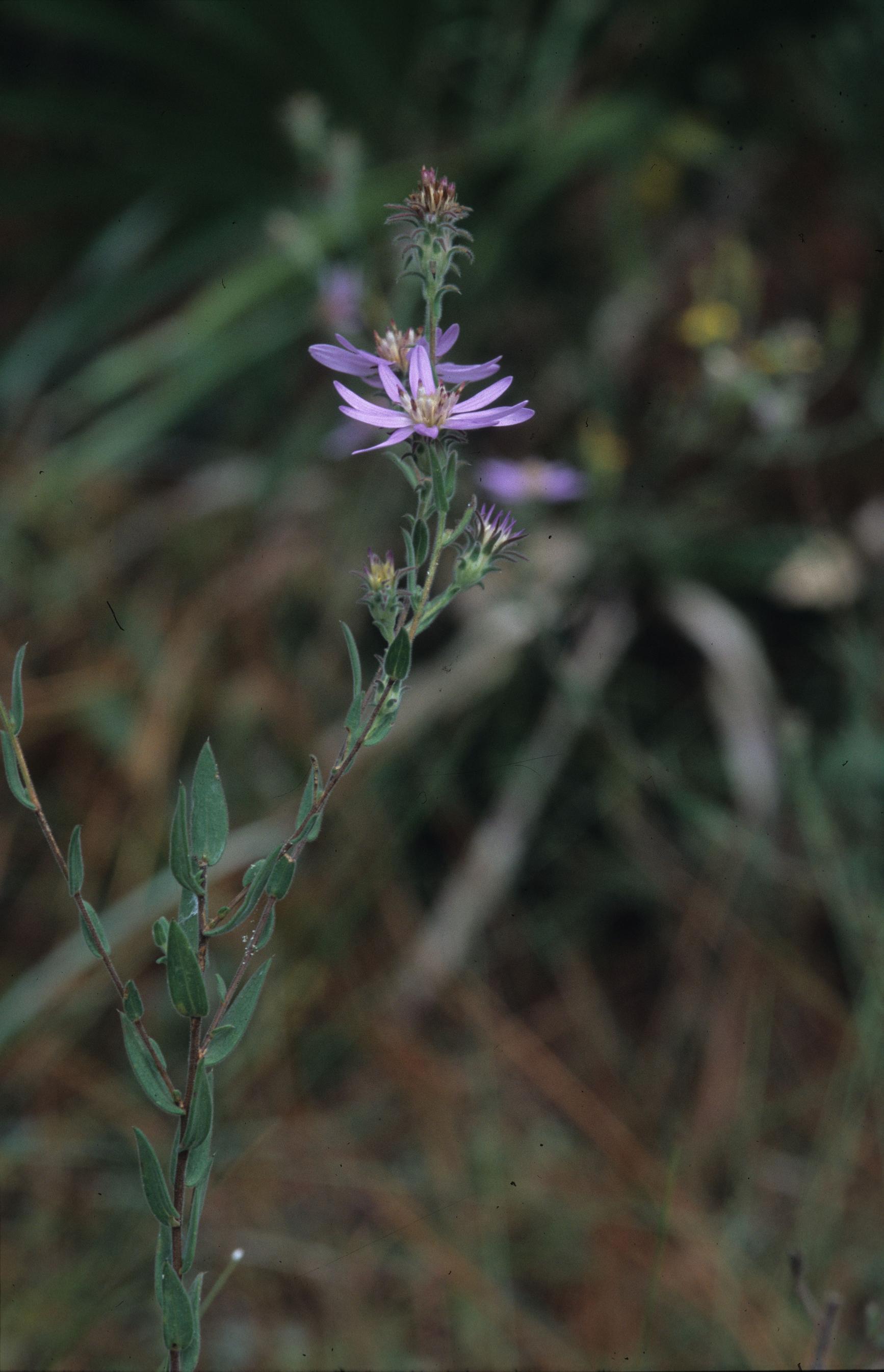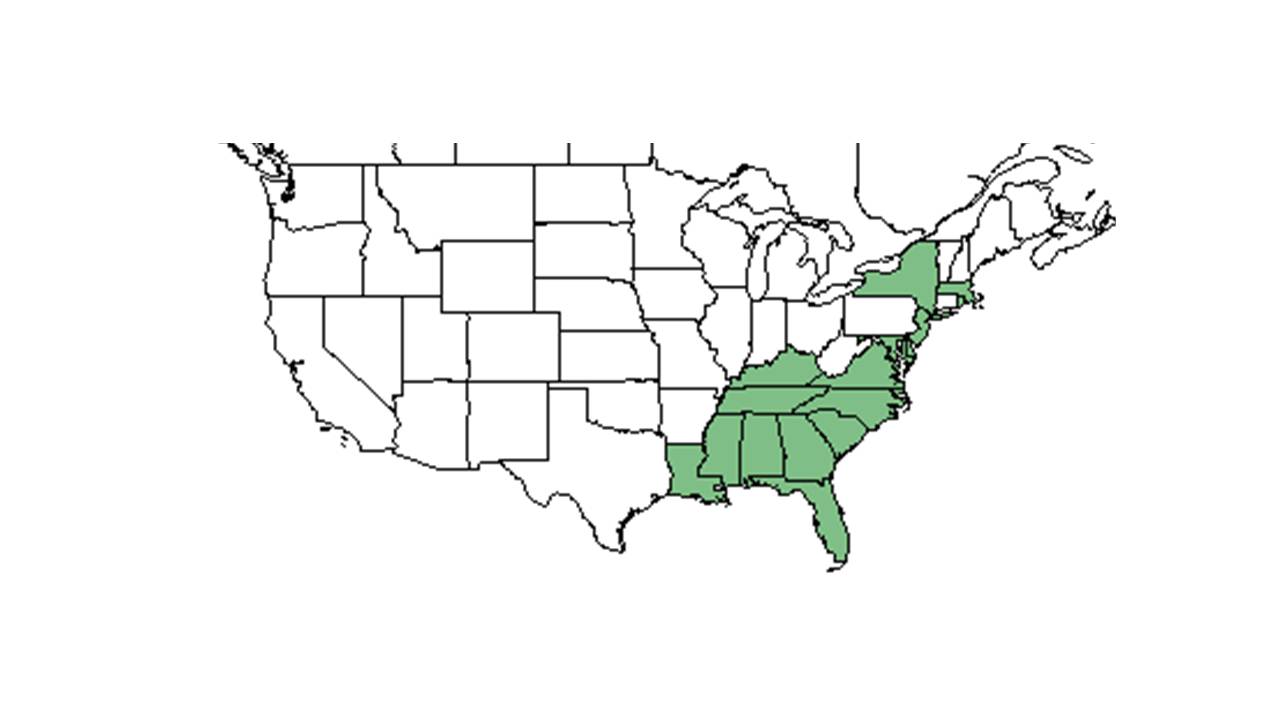Symphyotrichum concolor
| Symphyotrichum concolor | |
|---|---|

| |
| Photo taken by Gil Nelson | |
| Scientific classification | |
| Kingdom: | Plantae |
| Division: | Magnoliophyta - Flowering plants |
| Class: | Magnoliopsida - Dicotyledons |
| Order: | Asterales |
| Family: | Asteracae/Compositae |
| Genus: | Symphyotrichum |
| Species: | S. concolor |
| Binomial name | |
| Symphyotrichum concolor (L.) G.L. Nesom | |

| |
| Natural range of Symphyotrichum concolor from USDA NRCS Plants Database. | |
Common names: Eastern silver aster, Eastern silvery aster
Contents
Taxonomic notes
Synonyms: Symphyotrichum concolor (Linnaeus) G.L. Nesom var. concolor; Aster concolor Linnaeus; Virgulus concolor (Linnaeus) Reveal & Keener; Symphyotrichum concolor ssp. concolor Haines
Variety: Symphyotrichum concolor (Linnaeus) G.L. Nesom var. devestitum (S.F. Blake) Semple
Description
A description of Symphyotrichum concolor is provided in The Flora of North America.
Distribution
Ecology
Habitat
In the Coastal Plain region, S. concolor can be found at the edges of limestone glades, longleaf pine-wiregrass flatwoods, pine-oak-hickory woods, scrub oak sand ridges, edges of brackish marshes, annually burned pinelands, former longleaf pine savannas, longleaf pine-scrub oaks, sandhills, and along roadways. [1] It is restricted to native groundcover and can be found in upland pines of South Georgia. [2] When exposed to soil disturbance by military training in West Georgia, S. concolor responds negatively by way of absence.[3] It also responds negatively to soil disturbance by agriculture in Southwest Georgia.[4]
Associated species include Schoenus nigricans, Muhlenbergia capillaris, Quercus laevis, Q. incana, Q. minima, Q. margaretta, Aristida stricta, Polygonella gracilis, Smilax auriculata, Licania michauxii, Eupatorium compositifolium, Pinus taeda, Aster adnatus, Ilex vomitoria, Pteridium aquilinum, Polygonella gracilis, Solidago puberula, Liatris gracilis, Chrysopsis lanuginosa, Vaccinium darrow, Warea sessilifolia, Pityopsis graminifolia var. tenuifolia, Liatris chapmanii, Aster linarrifolius, Andropogon, Schizachyrium, Serenoa repens, Smilax auriculata, Solidago odora, Helianthus radula, Tridens ambiguous, Ilex opaca, Baptisia lanceolata, Lespedeza hirta, Petalostemum carolinianum, Agaritina aromatica, Pityopsis aspera var. adenolepsi, and Vaccinium lanuginosa. [1]
Symphyotrichum concolor is frequent and abundant in the North Florida Subxeric Sandhills community type as described in Carr et al. (2010).[5]
Phenology
S. concolor has been observed to flower in January, February, May, October, and November and fruit in October and November.[1][6] Michelle Smith observed this species flowering in April at Quailridge Plantation, in Georgia.
Seed dispersal
This species is thought to be dispersed by wind. [7]
Cultivation and restoration
Photo Gallery
References and notes
- ↑ 1.0 1.1 1.2 Florida State University Robert K. Godfrey Herbarium database. URL: http://herbarium.bio.fsu.edu. Last accessed: July 2015. Collectors: Loran C. Anderson, Wilson Baker, Ann F. Johnson, R. A. Norris, Andre F. Clewell, Robert K. Godfrey, R. Komarek. States and Counties: Florida: Bay, Calhoun, Jackson, Jefferson, Liberty, Wakulla, Walton, Washington. Georgia: Thomas. South Carolina: Lee. Compiled by Tall Timbers Research Station and Land Conservancy.
- ↑ Ostertag, T.E., and K.M. Robertson. 2007. A comparison of native versus old-field vegetation in upland pinelands managed with frequent fire, South Georgia, USA. Pages 109–120 in R.E. Masters and K.E.M. Galley (eds.). Proceedings of the 23rd Tall Timbers Fire Ecology Conference: Fire in Grassland and Shrubland Ecosystems.
- ↑ Dale, V.H., S.C. Beyeler, and B. Jackson. (2002). Understory vegetation indicators of anthropogenic disturbance in longleaf pine forests at Fort Benning, Georgia, USA. Ecological Indicators 1(3):155-170.
- ↑ Kirkman, L.K., K.L. Coffey, R.J. Mitchell, and E.B. Moser. Ground Cover Recovery Patterns and Life-History Traits: Implications for Restoration Obstacles and Opportunities in a Species-Rich Savanna. (2004). Journal of Ecology 92(3):409-421.
- ↑ Carr, S.C., K.M. Robertson, and R.K. Peet. 2010. A vegetation classification of fire-dependent pinelands of Florida. Castanea 75:153-189.
- ↑ Nelson, G. PanFlora: Plant data for the eastern United States with emphasis on the Southeastern Coastal Plains, Florida, and the Florida Panhandle. www.gilnelson.com/PanFlora/ Accessed: 14 DEC 2016
- ↑ Kirkman, L. Katherine. Unpublished database of seed dispersal mode of plants found in Coastal Plain longleaf pine-grasslands of the Jones Ecological Research Center, Georgia.